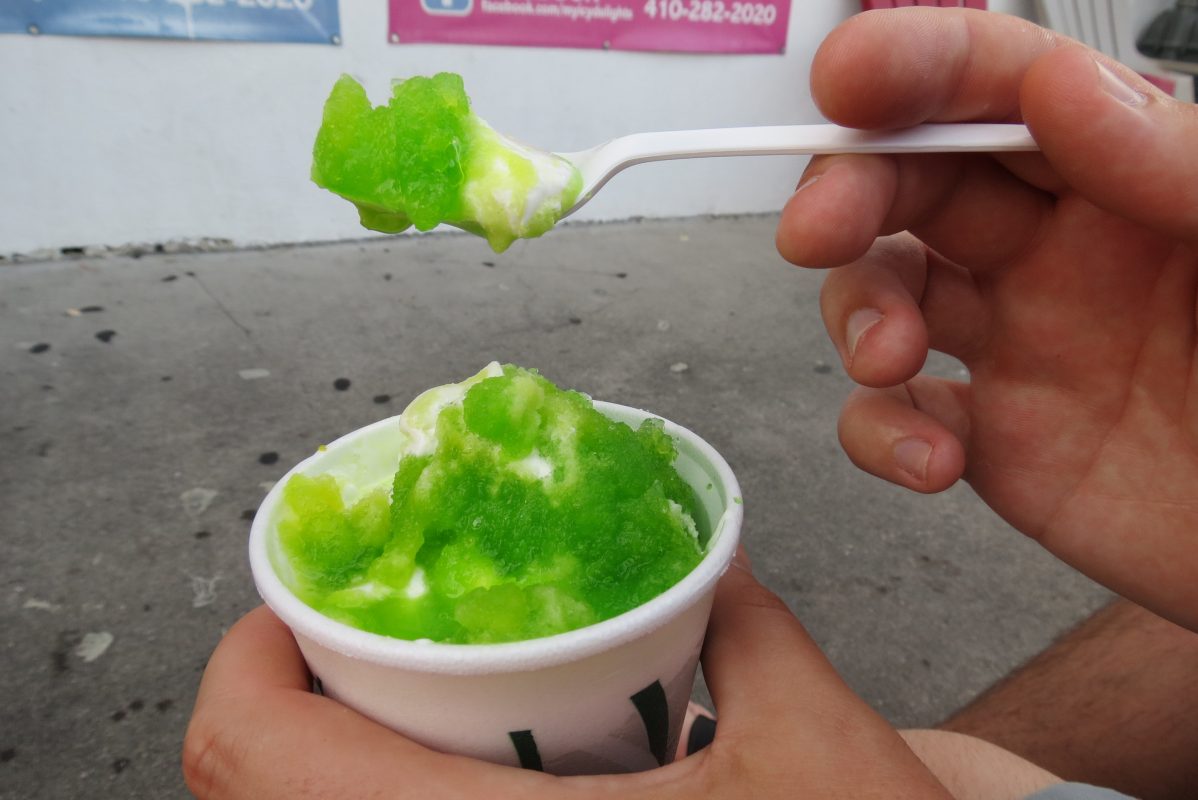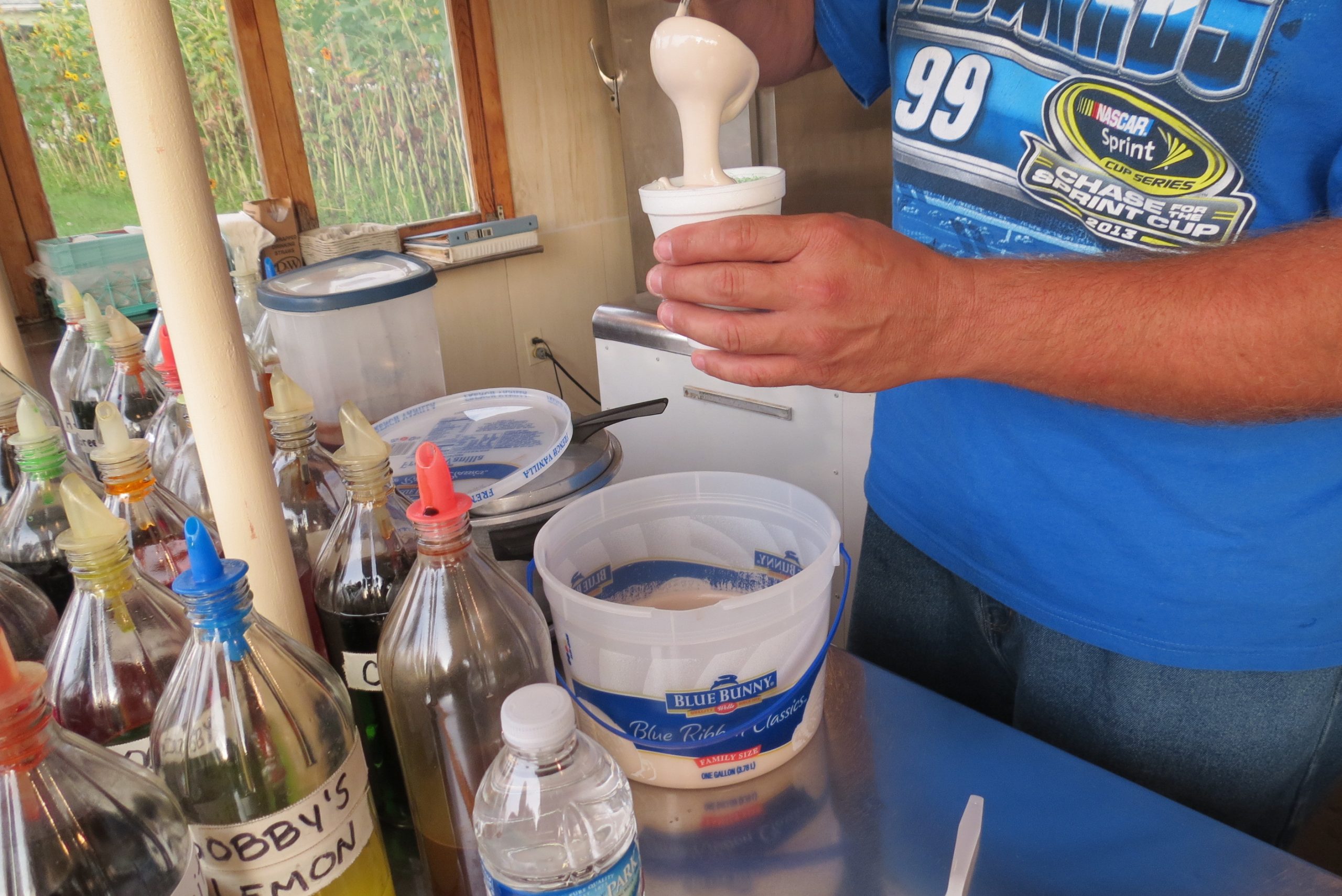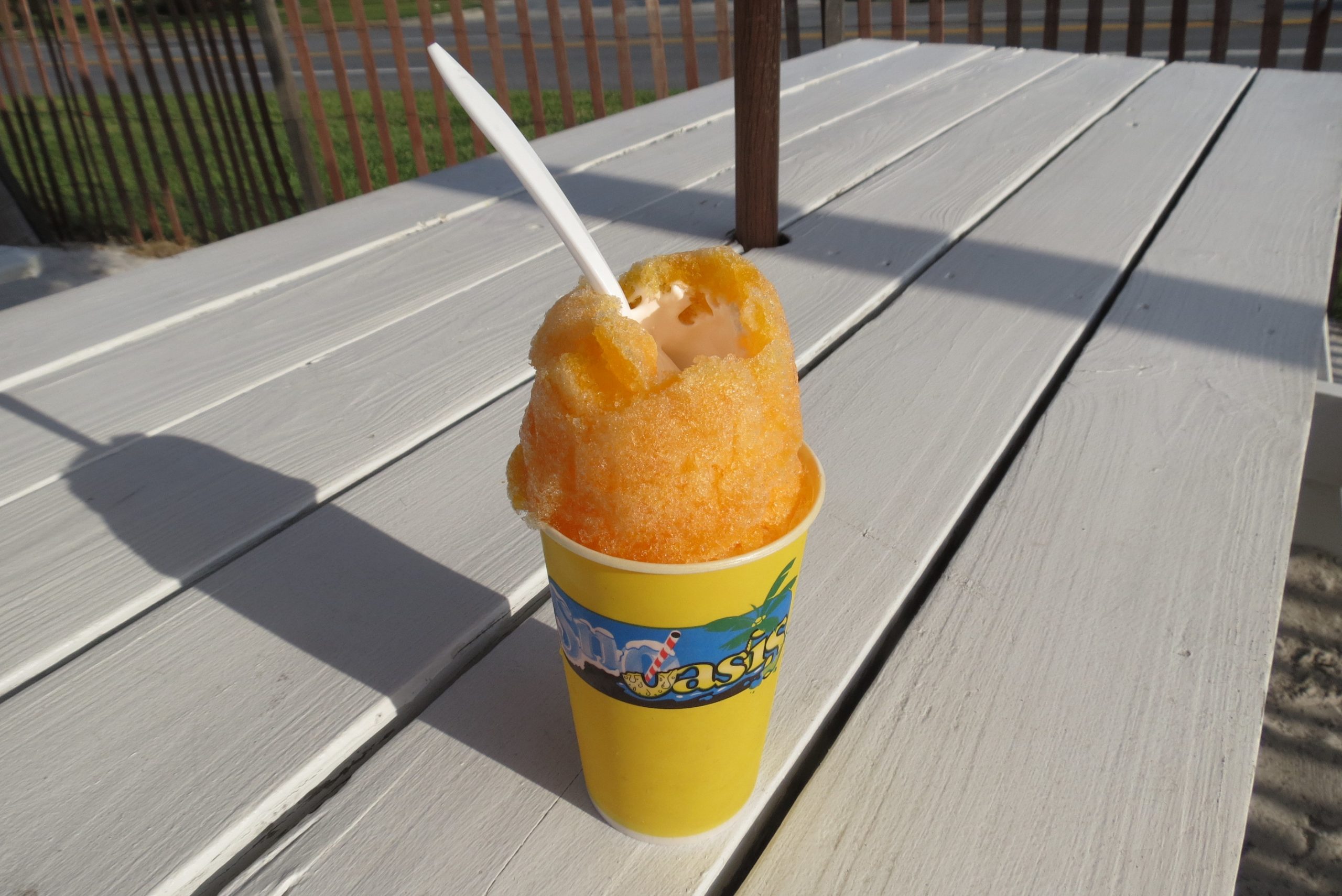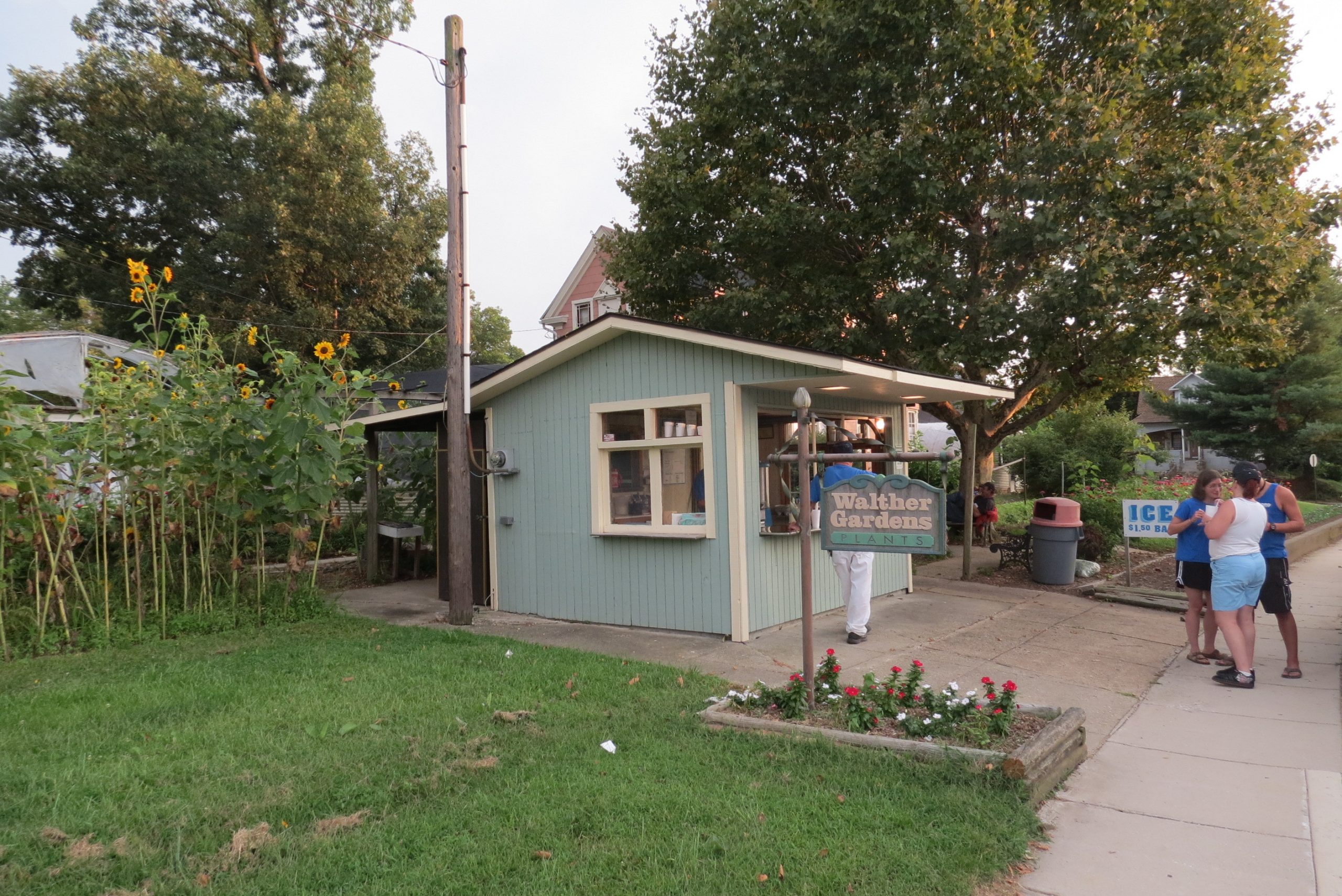
When Lisa Soudry overhears snowball skeptics, who have never had the frozen treat, one phrase comes up a lot: “Try egg custard with marshmallow and you’ll understand.”
Everywhere from the ’burbs to the city, roadside stands are rightfully upholding the conviction that no snowball is complete without a hefty ladleful of gooey melted marshmallow topping.
“It’s just such a Baltimore thing,” says Soudry, who estimates that 60 percent of her customers at The Summer Shack in Lutherville order their snowballs with marshmallow. “I had a lady from Florida stop by and say that she has something similar to a snowball stand near where she lives, but when you ask for marshmallow, they look at you like you have three heads.”
Bill Gay, co-owner of local snowball chain Icy Delights (which boasts locations everywhere from Dundalk to Highlandtown), says that his seven shops collectively go through 30 five-gallon buckets of marshmallow per week.
“I probably use more marshmallow than any other place in Baltimore,” notes Gay, who took over the Icy Delights franchise in 2000. “Especially during our busiest time—right when kids get out of school through the third week of July.”

Gay buys his marshmallow topping from local wholesaler Koldkiss, adds simple syrup, and then mixes it by hand with a stainless steel spoon to give it the right texture.
“Around here, marshmallow on a snowball is just something you grow up with,” he says. “It started before we were born and carried on throughout time, so it doesn’t seem strange or out of sorts. It’s just a matter of preference—either you like it or you don’t.”
Speaking of preference, the placement of the marshmallow has become a popular point of debate over the years. Unless otherwise requested, Gay serves his snowballs (traditionally topped with a plastic dome cover and a long spoon for stirring) with the marshmallow in the middle.
“You can always tell when you have a first-timer, because when we go to hand it out they say, ‘Oh, I asked for marshmallow,’” Gay says with a laugh. “We have to explain to them that it’s in the middle.”
The Summer Shack has a similar tactic: “We put it in the middle because that’s how moms like it,” Soudry says. “That way it doesn’t drip all over elbows and on the seats of the car.”
Timonium staple Snoasis takes a different approach. The stalwart stand, which has been in business since 1977, creates a concave dip in the top of the ice that acts as a cup-holder for the puddle of cream.

Co-owner Erin Hays refers to it as the “well” technique—an idea that her husband, Tom, came up with years ago.
“They create that well so that the marshmallow doesn’t get all over the place when the customer receives it,” she says. “Plus it allows more marshmallow to flow down into the middle.”
In the city, Hamilton-Lauraville’s Walther Gardens puts its own unique spin on the traditional topping. The garden’s snowball stand—arguably the oldest in Baltimore— dresses up the marshmallow with chocolate sauce for its special peppermint patty, peanut butter cup, and Almond Joy snowballs.
Co-owner Paula Wittek says that, whether ordering a candy-inspired flavor or classic egg custard, her customers are very matter-of-fact about their marshmallow preferences.
“Every single customer has a different request,” she says. “Some like it in the middle and some like us to top it off. We even have little ones that ask for a ‘marshmallow snowball,’ which is basically a cup of marshmallow.”

Wittek moved to Baltimore from Buffalo, New York when her brother, Matthew, bought the property two years ago. As she gets acclimated to her new home, she says that she is constantly amazed at how important snowballs are to Charm City culture.
“It’s so cool how integral they are in the community,” she says. “This is the beauty of Baltimore—when families take a little walk and come down after dinner, or people come on first dates and meet under the Sycamore tree, or when three or four fire trucks pull up from the local firehouse. It’s like a Norman Rockwell painting.”
